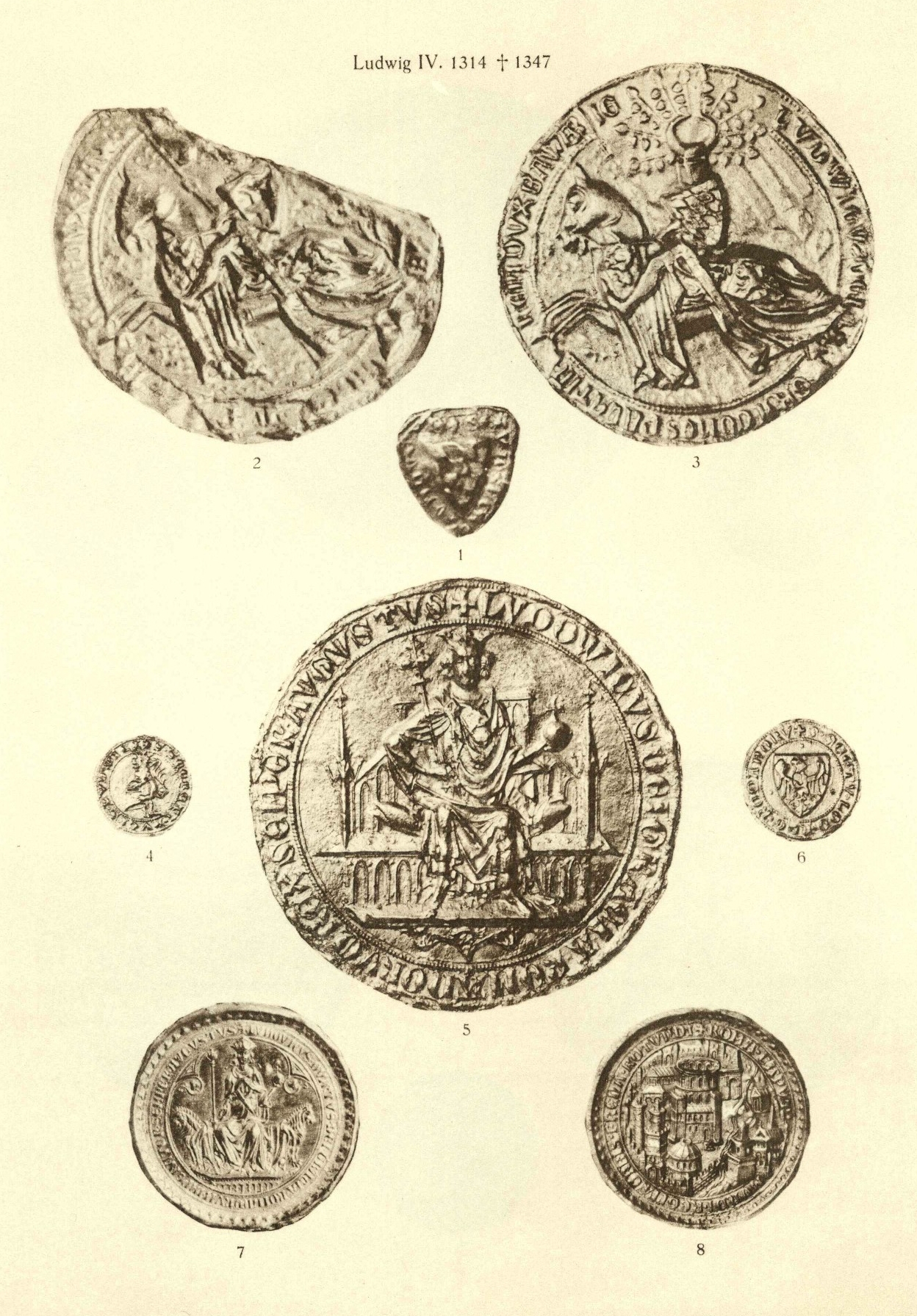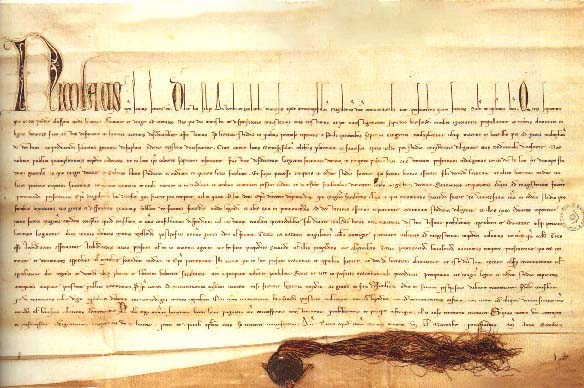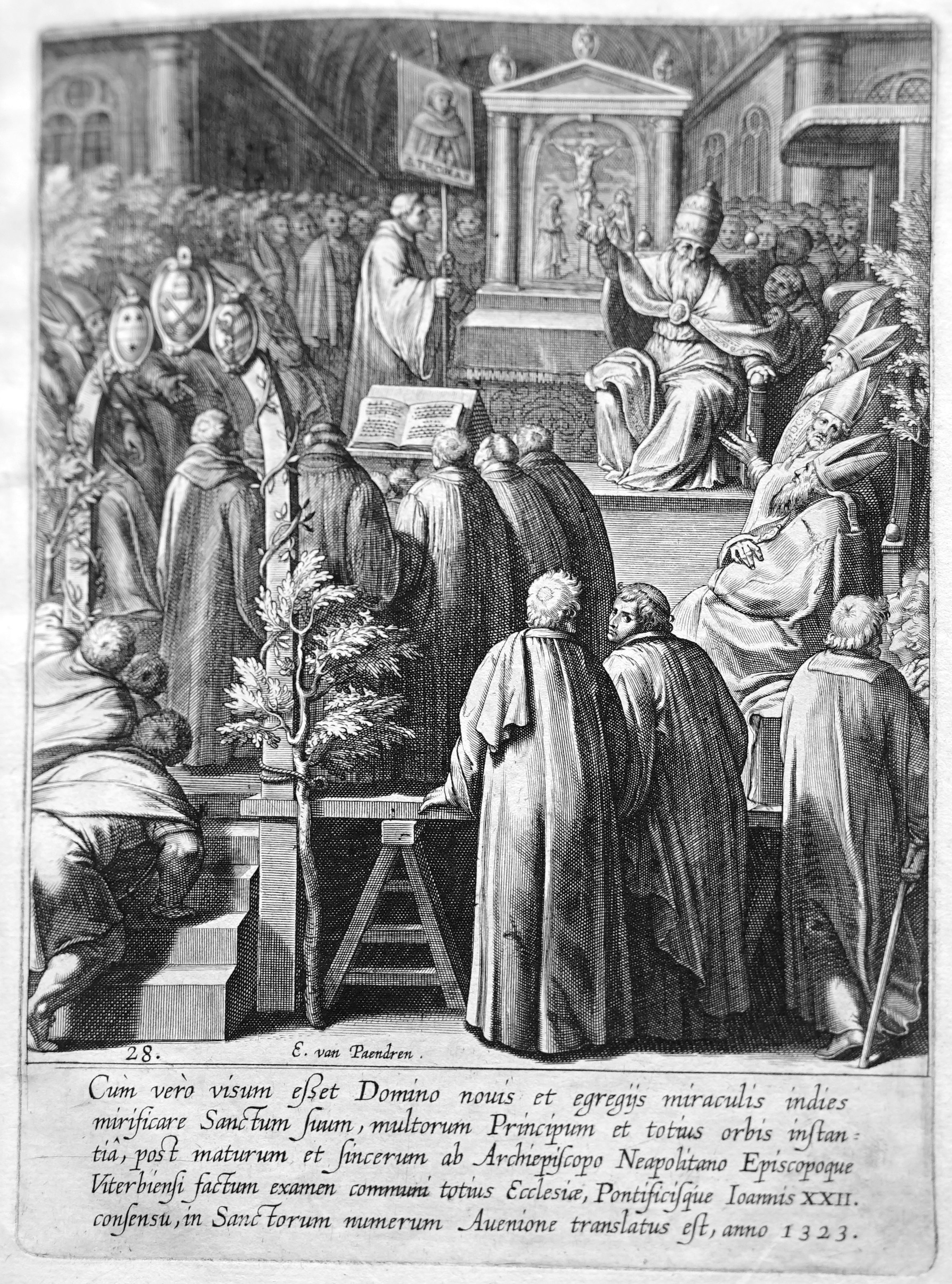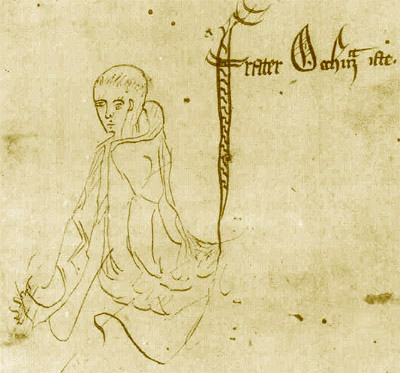|
Pope John XXII
Pope John XXII (, , ; 1244 – 4 December 1334), born Jacques Duèze (or d'Euse), was head of the Catholic Church from 7 August 1316 to his death, in December 1334. He was the second and longest-reigning Avignon Pope, elected by the Conclave of Cardinals, which was assembled in Lyon. Like his predecessor, Clement V, Pope John centralized power and income in the Papacy and lived a princely life in Avignon. John opposed the policies of Louis IV the Bavarian as Holy Roman Emperor, which prompted Louis to invade Italy and set up an antipope, Nicholas V. John also opposed the Franciscan understanding of the poverty of Christ and his apostles, promulgating multiple papal bulls to enforce his views. This led William of Ockham to write against unlimited papal power. Following a three-year process, John canonized Thomas Aquinas on 18 July 1323. One of John's sermons on the beatific vision caused controversy which lasted until he retracted his views just before his death. John died in A ... [...More Info...] [...Related Items...] OR: [Wikipedia] [Google] [Baidu] |
List Of Popes
This chronological list of the popes of the Catholic Church corresponds to that given in the under the heading "" (The Roman Supreme Pontiffs), excluding those that are explicitly indicated as antipopes. Published every year by the Roman Curia, the no longer #Numbering of popes, identifies popes by regnal number, stating that it is impossible to decide which pope represented the legitimate succession at various times. The 2001 edition of the introduced "almost 200 corrections to its existing biographies of the popes, from St Peter to John Paul II". The corrections concerned dates, especially in the first two centuries, birthplaces and the family name of one pope. The term ''Pope (word), pope'' () is used in several churches to denote their high spiritual leaders (for example Coptic pope). This title is usually used in English to refer to the head of the Catholic Church. The Catholic pope uses various titles by tradition, including , , and . Each title has been added by unique ... [...More Info...] [...Related Items...] OR: [Wikipedia] [Google] [Baidu] |
Louis IV, Holy Roman Emperor
Louis IV (; 1 April 1282 – 11 October 1347), called the Bavarian (, ), was King of the Romans from 1314, King of Italy from 1327, and Holy Roman Emperor from 1328 until his death in 1347. 20 October 1314 imperial election, Louis' election as king of Germany in 1314 was controversial, as his House of Habsburg, Habsburg cousin Frederick the Fair was simultaneously elected king by a separate set of electors. Louis defeated Frederick in the Battle of Mühldorf in 1322, and the two eventually reconciled. Louis was opposed and excommunicated by the French Pope John XXII; Louis in turn attempted to depose the pope and install an anti-pope. Louis IV was Duke of Upper Bavaria from 1294 to 1301 together with his elder brother Rudolf I, Duke of Bavaria, Rudolf I, was Margraviate of Brandenburg, Margrave of Brandenburg until 1323, and Electoral Palatinate, Count Palatine of the Rhine until 1329, and became Duke of Bavaria, Duke of Lower Bavaria in 1340. He was the last Bavarian to be a ... [...More Info...] [...Related Items...] OR: [Wikipedia] [Google] [Baidu] |
Charles II Of Naples
Charles II, also known as Charles the Lame (; ; 1254 – 5 May 1309), was King of Naples, Count of Provence and Forcalquier (1285–1309), Prince of Achaea (1285–1289), and Count of Anjou and Maine (1285–1290); he also was King of Albania (1285–1294), and claimed the Kingdom of Jerusalem from 1285. He was the son of Charles I of Anjouone of the most powerful European monarchs in the second half of the 13th centuryand Beatrice of Provence. His father granted Charles the Principality of Salerno in the Kingdom of Sicily (or ''Regno'') in 1272 and made him regent in Provence and Forcalquier in 1279. After the uprising known as the Sicilian Vespers against Charles's father, the island of Sicily became an independent kingdom under the rule of Peter III of Aragon in 1282. A year later, his father made Charles regent in the mainland territories of the ''Regno'' (or the Kingdom of Naples). Charles held a general assembly where unpopular taxes were abolished and the liberties of t ... [...More Info...] [...Related Items...] OR: [Wikipedia] [Google] [Baidu] |
Louis Of Toulouse
Saint Louis of Toulouse (9 February 1274 – 19 August 1297), also known as Louis of Anjou, was a Neapolitan prince of the Capetian House of Anjou and a Catholic bishop. Life Louis was born in Brignoles, Provence (or in Italy, at Nocera, where he spent a part of his early life), the second son of King Charles II of Naples and Mary of Hungary. His father, Charles, became king of Naples in 1285 and was taken prisoner in Italy, during the war with King Peter III of Aragon that followed the Sicilian Vespers. Charles obtained his own freedom by giving over his three sons as hostages. Louis and his brothers were taken to Catalonia, where they were placed under the care of Franciscan friars for their education and held for seven years. Impressed by one of the friars in particular, Arnauld de Villeneuve, Louis took up the study of philosophy and theology. Though still held in captivity, Louis was made archbishop of Lyon as soon as he reached his majority. When his older brother died o ... [...More Info...] [...Related Items...] OR: [Wikipedia] [Google] [Baidu] |
Toulouse
Toulouse (, ; ; ) is a city in southern France, the Prefectures in France, prefecture of the Haute-Garonne department and of the Occitania (administrative region), Occitania region. The city is on the banks of the Garonne, River Garonne, from the Mediterranean Sea, from the Atlantic Ocean and from Paris. It is the List of communes in France with over 20,000 inhabitants, fourth-largest city in France after Paris, Marseille and Lyon, with 511,684 inhabitants within its municipal boundaries (2022); its Functional area (France), metropolitan area has a population of 1,513,396 inhabitants (2022). Toulouse is the central city of one of the 22 Métropole, metropolitan councils of France. Between the 2014 and 2020 censuses, its metropolitan area was the third fastest growing among metropolitan areas larger than 500,000 inhabitants in France. Toulouse is the centre of the European aerospace industry, with the headquarters of Airbus, the SPOT (satellites), SPOT satellite system, ATR ( ... [...More Info...] [...Related Items...] OR: [Wikipedia] [Google] [Baidu] |
University Of Paris
The University of Paris (), known Metonymy, metonymically as the Sorbonne (), was the leading university in Paris, France, from 1150 to 1970, except for 1793–1806 during the French Revolution. Emerging around 1150 as a corporation associated with the cathedral school of Paris, it was considered the List of medieval universities, second-oldest university in Europe.Charles Homer Haskins: ''The Rise of Universities'', Henry Holt and Company, 1923, p. 292. Officially chartered in 1200 by Philip II of France, King Philip II and recognised in 1215 by Pope Innocent III, it was nicknamed after its theological College of Sorbonne, founded by Robert de Sorbon and chartered by King Louis IX around 1257. Highly reputed internationally for its academic performance in the humanities ever since the Middle Ages – particularly in theology and philosophy – it introduced academic standards and traditions that have endured and spread, such as Doctor (title), doctoral degrees and student nations. ... [...More Info...] [...Related Items...] OR: [Wikipedia] [Google] [Baidu] |
University Of Montpellier
The University of Montpellier () is a public university, public research university located in Montpellier, in south-east of France. Established in 1220, the University of Montpellier is one of the List of oldest universities in continuous operation, oldest universities in the world. The university was split into three universities (the University of Montpellier 1, the Montpellier 2 University, University of Montpellier 2 and the Paul Valéry University, Montpellier III, Paul Valéry University Montpellier 3) for 45 years from 1970 until 2015 when it was subsequently reunified by the merger of the two former, with the latter, now named Paul Valéry University, Montpellier III, remaining a separate entity. History The university is associated with a papal bull issued by Pope Nicholas IV in 1289, combining various centuries-old schools into a university. The university is considerably older than its formal founding date, with the first statutes given by Conrad of Urach in 1220. ... [...More Info...] [...Related Items...] OR: [Wikipedia] [Google] [Baidu] |
Canon Law
Canon law (from , , a 'straight measuring rod, ruler') is a set of ordinances and regulations made by ecclesiastical jurisdiction, ecclesiastical authority (church leadership) for the government of a Christian organization or church and its members. Canon law includes the internal ecclesiastical law, or operational policy, governing the Catholic Church (both the Latin Church and the Eastern Catholic Churches), the Eastern Orthodox Church, Eastern Orthodox and Oriental Orthodoxy, Oriental Orthodox churches, and the individual national churches within the Anglican Communion. The way that such church law is legislative power, legislated, interpreted and at times court, adjudicated varies widely among these four bodies of churches. In all three traditions, a canon (canon law), canon was originally a rule adopted by a church council; these canons formed the foundation of canon law. Etymology Greek language, Greek / , Arabic language, Arabic / , Hebrew language, Hebrew / , 'straigh ... [...More Info...] [...Related Items...] OR: [Wikipedia] [Google] [Baidu] |
Cahorsin
The Cahorsins were merchants and financiers from the French city of Cahors and the surrounding region of Quercy during the High Middle Ages. During their 13th-century heyday, they were among the most prominent communities of Christian long-distance traders outside of Italy, and were particularly prominent in commerce between England and its continental lands of the Duchy of Aquitaine. They declined rapidly from around 1300 CE, but their name long remained synonymous with usury in much of Western Europe. Name The names of Cahors and the Quercy both derive from the Cadurci people who inhabited the region during the Iron Age and Roman period. In medieval parlance, ''Cahorsins'', alternatively spelled ''Caorcins'', ''Caorsins'', ''Caoursins'' or ''Cahursins'', included merchants from Cahors but also Cajarc, Capdenac, Cardaillac, Castelnau-Montratier, Figeac, Gourdon, Rocamadour, and Souillac They were referred to as ''Caorsini'' in Italian, ''Cahorsijnen'' in Dutch, and ''Kawe ... [...More Info...] [...Related Items...] OR: [Wikipedia] [Google] [Baidu] |
Thomas Aquinas
Thomas Aquinas ( ; ; – 7 March 1274) was an Italian Dominican Order, Dominican friar and Catholic priest, priest, the foremost Scholasticism, Scholastic thinker, as well as one of the most influential philosophers and theologians in the Western tradition. A Doctor of the Church, he was from the county of Aquino, Italy, Aquino in the Kingdom of Sicily. Thomas was a proponent of natural theology and the father of a school of thought (encompassing both theology and philosophy) known as Thomism. Central to his thought was the doctrine of natural law, which he argued was accessible to Reason, human reason and grounded in the very nature of human beings, providing a basis for understanding individual rights and Moral duty, moral duties. He argued that God is the source of the light of natural reason and the light of faith. He embraced several ideas put forward by Aristotle and attempted to synthesize Aristotelianism, Aristotelian philosophy with the principles of Christianity. A ... [...More Info...] [...Related Items...] OR: [Wikipedia] [Google] [Baidu] |
Canonization Of Thomas Aquinas
Following two inquiries which involved over a hundred eyewitnesses, the Italian Dominican Order, Dominican theologian and philosopher Thomas Aquinas (1225–1274) was formally canonization, canonized as a saint of the Catholic Church on 18 July 1323 by Pope John XXII. His corpse was boiled and his remains were distributed as relics, the ownership of which was contested for decades. In 1324, he became the second most important saint in the Dominican Order, after Saint Dominic himself. In 1969, the Calendar of saints, feast day of Thomas was moved from 7 March to 28 January. Death While en route to the Second Council of Lyon, Thomas Aquinas died on the morning of 7 March 1274 at the Cistercians, Cistercian abbey of Fossanova Abbey, Fossanova. His funeral, which was organized by the Cistercians, concluded hours later and he was buried in the monastery. Following the news of his death, devotees rushed to his tomb, where multiple miracles were reported. According to Cistercian witnes ... [...More Info...] [...Related Items...] OR: [Wikipedia] [Google] [Baidu] |
William Of Ockham
William of Ockham or Occam ( ; ; 9/10 April 1347) was an English Franciscan friar, scholastic philosopher, apologist, and theologian, who was born in Ockham, a small village in Surrey. He is considered to be one of the major figures of medieval thought and was at the centre of the major intellectual and political controversies of the 14th century. He is commonly known for Occam's razor, the methodological principle that bears his name, and also produced significant works on logic, physics and theology. William is remembered in the Church of England with a commemoration corresponding to the commonly ascribed date of his death on 10 April. Life William of Ockham was born in Ockham, Surrey, around 1287. He received his elementary education in the London House of the Greyfriars. It is believed that he then studied theology at the University of OxfordSpade, Paul Vincent (ed.). ''The Cambridge Companion to Ockham''. Cambridge University Press, 1999, p. 20.He has long been claim ... [...More Info...] [...Related Items...] OR: [Wikipedia] [Google] [Baidu] |









